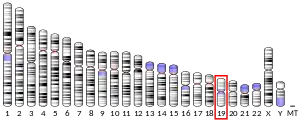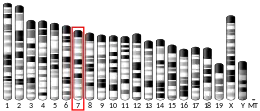| ZNF865 | |||||||||||||||||||||||||||||||||||||||||||||||||||
|---|---|---|---|---|---|---|---|---|---|---|---|---|---|---|---|---|---|---|---|---|---|---|---|---|---|---|---|---|---|---|---|---|---|---|---|---|---|---|---|---|---|---|---|---|---|---|---|---|---|---|---|
| Identifiers | |||||||||||||||||||||||||||||||||||||||||||||||||||
| Aliases | ZNF865, zinc finger protein 865 | ||||||||||||||||||||||||||||||||||||||||||||||||||
| External IDs | MGI: 2442656 HomoloGene: 19652 GeneCards: ZNF865 | ||||||||||||||||||||||||||||||||||||||||||||||||||
| |||||||||||||||||||||||||||||||||||||||||||||||||||
| |||||||||||||||||||||||||||||||||||||||||||||||||||
| |||||||||||||||||||||||||||||||||||||||||||||||||||
| |||||||||||||||||||||||||||||||||||||||||||||||||||
| |||||||||||||||||||||||||||||||||||||||||||||||||||
| Wikidata | |||||||||||||||||||||||||||||||||||||||||||||||||||
| |||||||||||||||||||||||||||||||||||||||||||||||||||
ZNF865[5] (also referred to as BLST [2-4]) is a C2H2 member of the zinc finger family of proteins. Structurally, ZNF865 consists of 20 different zinc finger domains, 6 disordered regions, 2 transactivation domains, and 2 TGEKP domains.[6] Diseases associated with ZNF865 expression include Parkinson’s disease, esophageal cancer, and musculoskeletal diseases. Lack of expression of ZNF865 has been associated with increased incidence of Parkinson’s disease,[7] worse outcome measures in esophageal cancer,[7] and increased incidence of musculoskeletal diseases.
Broadly, ZNF865 is expressed across all human cell and tissue types.[6][8] Bioinformatics analysis predicts ZNF865 to be localized to the nucleus, and function in metal ion binding, DNA-binding transcription factor activity, interact with RNA polymerase II, and regulate transcription by RNA polymerase II.[8] Experimental data displays ZNF865 is a regulator of cellular senescence, cell cycle progression, DNA replication, DNA repair, and protein processing.[9] Lack of expression of ZNF865 induces cellular senescence, indicating that ZNF865 expression is necessary for healthy cell function. While increased expression of ZNF865 results in a shift in the cell cycle, increased rates of DNA replication and proliferation rates. Overall, ZNF865 has been confirmed as a regulator of cellular senescence, cell cycle progression, and DNA replication.
References
- 1 2 3 GRCh38: Ensembl release 89: ENSG00000261221 - Ensembl, May 2017
- 1 2 3 GRCm38: Ensembl release 89: ENSMUSG00000074405 - Ensembl, May 2017
- ↑ "Human PubMed Reference:". National Center for Biotechnology Information, U.S. National Library of Medicine.
- ↑ "Mouse PubMed Reference:". National Center for Biotechnology Information, U.S. National Library of Medicine.
- ↑ "ZNF865".
- 1 2 "UniProt". www.uniprot.org.
- 1 2 Hong K, Yang Q, Yin H, Wei N, Wang W, Yu B (April 2023). "Comprehensive analysis of ZNF family genes in prognosis, immunity, and treatment of esophageal cancer". BMC Cancer. 23 (1): 301. doi:10.1186/s12885-023-10779-5. PMC 10069130. PMID 37013470.
- 1 2 "Subcellular - ZNF865 - The Human Protein Atlas". www.proteinatlas.org.
- ↑ Levis H, Lewis C, Stockham E, Weston JD, Lawal A, Lawrence B, Gullbrand SE, Bowles RD (2023-10-29), ZNF865 Regulates Senescence and Cell Cycle for Applications to Cell Engineering and Gene Therapy, doi:10.1101/2023.10.25.563801, S2CID 264935945, retrieved 2024-01-12



